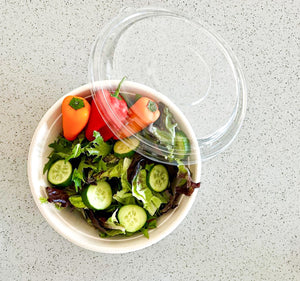

Element Paper Straws
Why fight the straw?
Traditional Straws are made of polypropylene, a petroleum based plastic known for its cheap and easy to produce nature. Polypropylene has a high melting point making it suitable for its use with hot food and resists acids and bases. This plastic is characterized by its long carbon chain, that reacts with oxygen and UV rays. The plastic breaks down and leaches toxins and microplastics into the soil and ocean.
While the best solution to the straw epidemic may be to completely eliminate them from our lives, we must realize that there are situations where that may not be an option. If we must use a straw then we might as well do it in the most eco friendly way possible. Current eco friendly solutions to the problem of straw pollution include bioplastics and paper alternatives. Although all these options are better than the current polypropylene based straw, each have their benefits and limitations.
Bioplastics
Bioplastics are plastics that are biomass based not petroleum based. Biomass such as cornstarch and bio oils creates a biodegradable product that can have the same thermal and physical properties as polypropylene. The main difference between bioplastics and regular plastic is the end of its life. While petroleum based straws do “disappear” they do so over hundreds of years. And over those hundreds of years they break down into smaller and smaller pieces of plastic. These microplastics find their way into the food chain with fish digesting and absorbing the plastic chemicals that are results of these straws. With bioplastics this outcome can be avoided. With faster breakdown times in controlled decomposition, bioplastics can be discarded alongside food waste to be biodegraded in months. Helping to avoid the great pacific garbage patch, and leave the fish healthier and the planet happier.
Paper
An even better alternative to bioplastics are uncoated paper straws. They use no petroleum to make and decompose even faster than bioplastic straws. Along with the rate at which they decompose, they do not affect the organic nature of the compost. While bioplastics can decompose into soil under controlled conditions, paper straws freely decompose into nature. If a straw accidentally makes its way out of the cycle of disposal and slips off into your neighborhood park, you can rest easy knowing it will only be there a few weeks before it melts away.
Which is better?
Although the time of use for a straw is dismissible, the impact it has on the environment after that use cannot be ignored. Both the bioplastic and the paper straws are better than the petroleum based straw in regards to the effect on the environment, but what straw is the top contender? Bioplastic straws are made of a plastic and organic blend, making it easier for the straw to break down over time. Paper is made of 100% organic material that simply transfers back into the environment in which it came. If you are looking to completely rid your straw of all guilt but compromise some rigidity, the paper straw is your best bet. If you want to sacrifice some green aspects of your straw while maintaining a rigid, durable nature, then bioplastics are your answer.
Paper Straws by Element
Looking for an eco friendly straw? Try Element paper straws! Element straws are made with FSC certified paper. They are 100% compostable, 100% customizable and a great way to make your money work a little greener.





